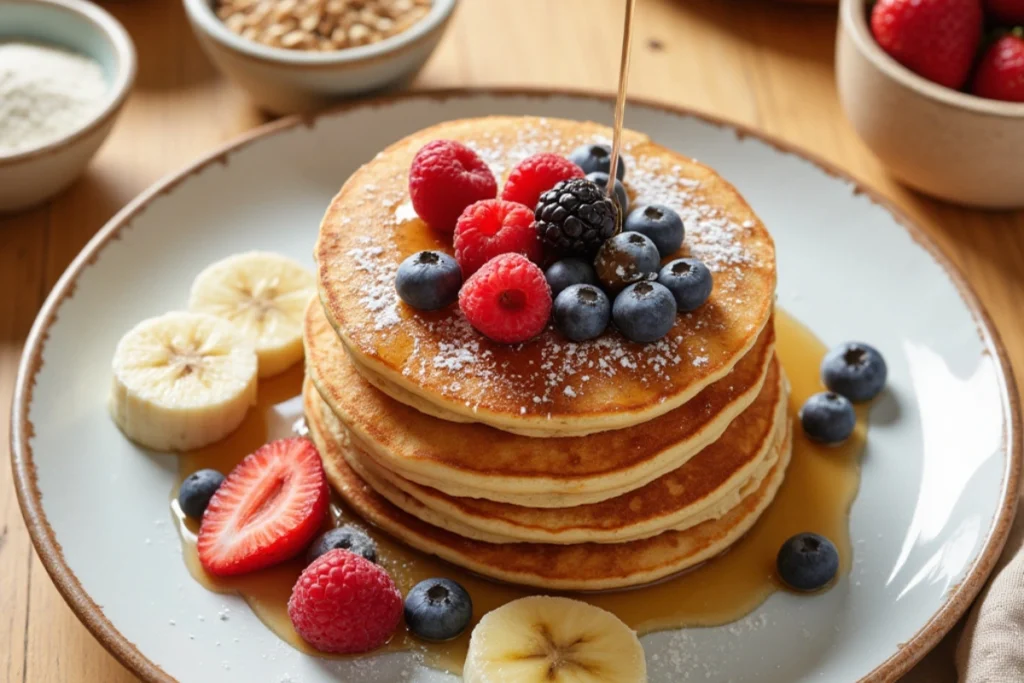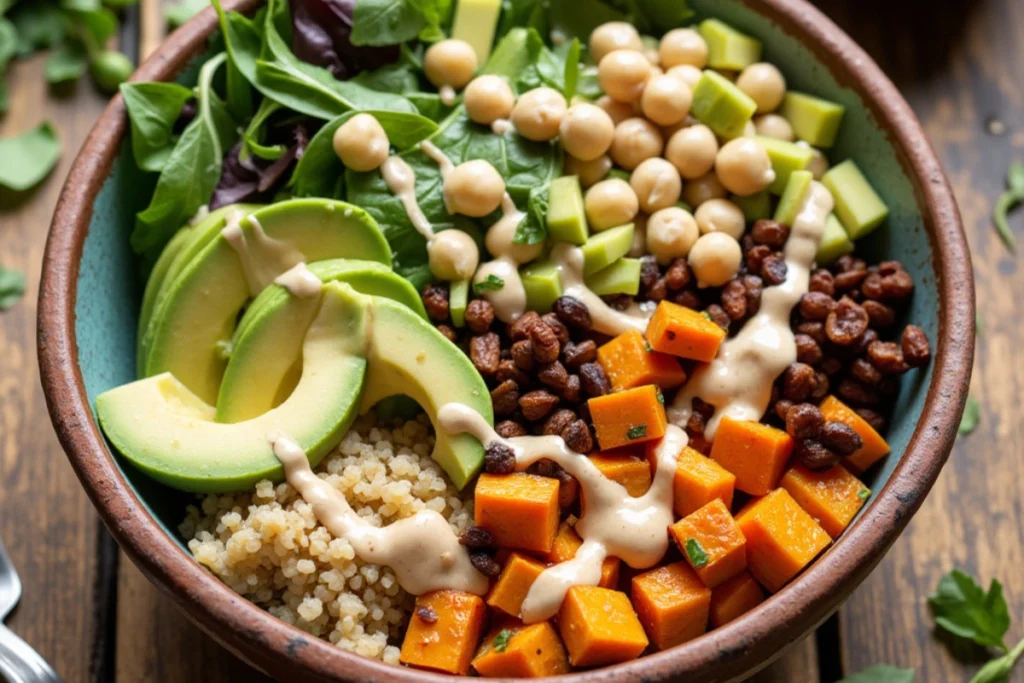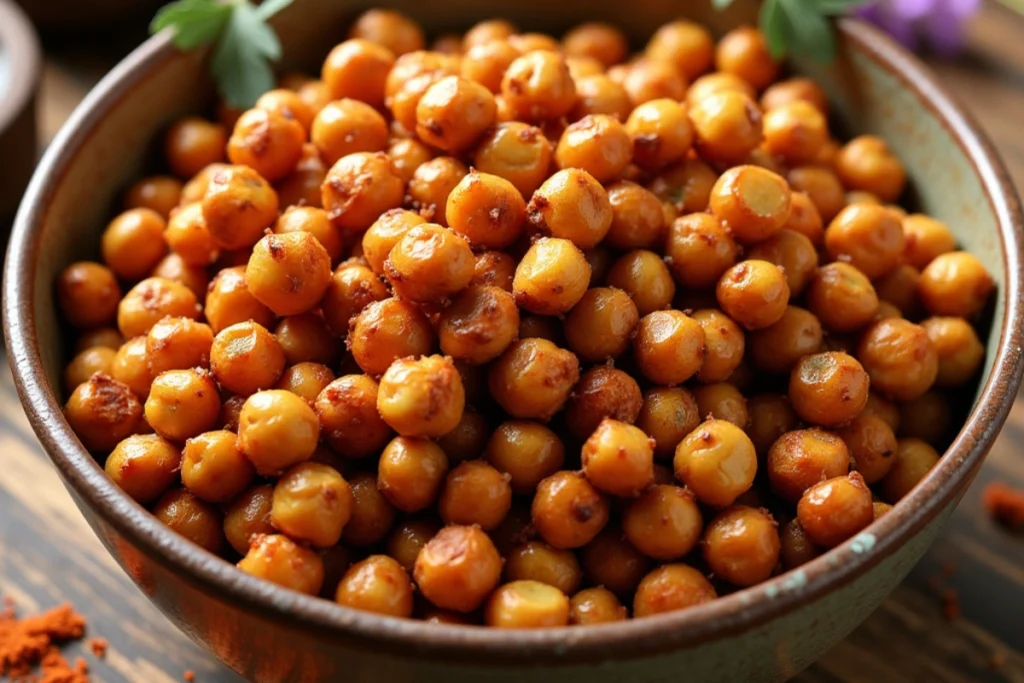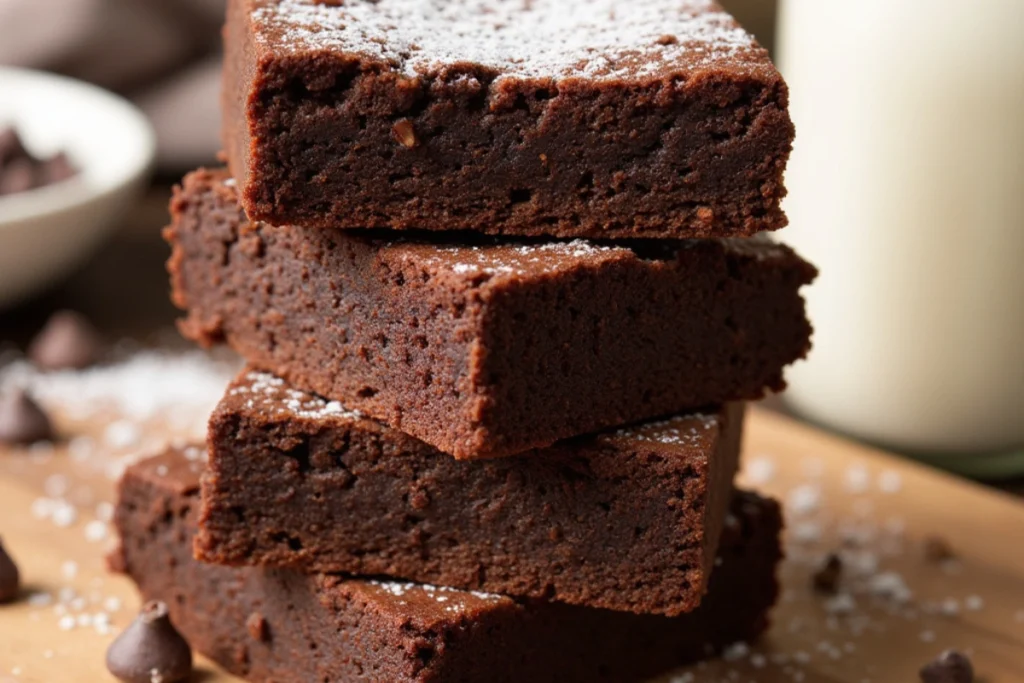Welcome to the ultimate guide for gluten-free vegan recipes! If you’ve been searching for a way to enjoy delicious, plant-based meals without gluten, you’re in the right place. Combining a gluten-free and vegan lifestyle might seem challenging, but with the right recipes, tips, and a well-stocked pantry, it becomes a breeze. Meals that align with this lifestyle, such as those highlighted in the Vegan and Gluten-Free Guide, showcase how easy and enjoyable this journey can be. This article dives deep into everything you need to know—from understanding the benefits to trying out incredible recipes and overcoming common challenges. Let’s get started!
What Is a Gluten-Free Vegan Diet?
Understanding Gluten-Free and Vegan Diets
The gluten-free vegan diet is a combination of two dietary principles: avoiding gluten and excluding all animal products. But what exactly do these terms mean, and how can they work together? Let’s break it down.
What Does Gluten-Free Mean?
Gluten is a protein found in grains like wheat, barley, and rye. For individuals with celiac disease or gluten sensitivity, consuming gluten can cause severe health issues, including digestive distress and inflammation. Avoiding gluten means steering clear of foods like bread, pasta, and baked goods made from these grains. However, there are plenty of gluten-free alternatives available today, such as rice, quinoa, and almond flour.
What Does Vegan Mean?
A vegan diet excludes all animal-derived products, including meat, dairy, eggs, and even honey. Instead, vegans focus on plant-based foods like fruits, vegetables, grains, legumes, nuts, and seeds. The reasons for choosing veganism range from ethical considerations to health benefits and environmental sustainability.
How They Combine: Gluten-Free Vegan Diet
When you combine gluten-free and vegan eating, you create a diet free of both animal products and gluten-containing ingredients. While this might sound restrictive, it opens the door to creative cooking with nutrient-rich alternatives like legumes, gluten-free grains, and vegetables. Plus, it’s a great way to align with ethical, health, and environmental goals.
Key Points to Remember
Gluten-free means avoiding all foods made from wheat, barley, and rye. A vegan diet excludes all animal-derived products. Together, they form a plant-based, gluten-free lifestyle that is wholesome and inclusive..
Benefits of Gluten-Free Vegan Recipes
Why Choose Gluten-Free Vegan Recipes?
Embracing gluten-free vegan recipes offers a plethora of benefits that go beyond dietary restrictions. Whether you’re managing a gluten sensitivity or embracing a plant-based lifestyle, this diet can be a game-changer for your health, ethics, and the environment.
Health Benefits
A gluten-free vegan diet is naturally rich in fruits, vegetables, and whole foods, which are packed with vitamins, minerals, and antioxidants. This nutrient-dense approach can support better digestion, improve energy levels, and promote overall wellness. Removing gluten may also reduce inflammation in those with sensitivities, contributing to better gut health and potentially alleviating chronic symptoms. Many nutrient-dense meal ideas that align with this lifestyle are featured in Vegan Gluten-Free Recipes, showcasing how to make the most of wholesome ingredients.
Environmental Impact
Adopting gluten-free vegan recipes reduces your carbon footprint significantly. Plant-based diets require fewer resources like water and land compared to animal-based diets. By excluding animal products and gluten-rich grains like wheat (which have a high environmental impact), you’re actively contributing to a more sustainable food system.
Ethical Considerations
For those who prioritize animal welfare, gluten-free vegan eating aligns perfectly with ethical values. Eliminating animal products from your meals ensures no animals are harmed in the process. Plus, choosing gluten-free grains often supports small-scale farmers producing naturally gluten-free crops like quinoa and millet.
Key Points to Remember
A gluten-free vegan diet can improve digestion, reduce inflammation, and boost your energy. It also promotes sustainability and supports ethical living by reducing environmental impact and protecting animal welfare.
Essential Ingredients for Gluten-Free Vegan Cooking
Gluten-Free Vegan Pantry Essentials
Cooking satisfying gluten-free vegan recipes becomes simple when your pantry is stocked with versatile, nutrient-rich ingredients. With these staples, you can create meals that are flavorful, healthy, and easy to prepare.
Gluten-Free Grains and Flours
You can build the foundation of many recipes with gluten-free grains like quinoa, rice, and buckwheat. They are naturally gluten-free and packed with essential nutrients. For baking, you can use almond flour or coconut flour, which are great substitutes for wheat-based flours. Chickpea flour also works well, especially for savory dishes, because it adds a nutty flavor and solid texture.
Plant-Based Protein Sources
Gluten-free vegan diets offer plenty of protein options. Lentils and chickpeas deliver plant-based protein while being versatile for soups, stews, and salads. Black beans, tofu, and tempeh are also rich in protein and easy to incorporate into various recipes. Additionally, tempeh, made from fermented soybeans, provides a slightly nutty taste that enhances dishes. Many protein-packed meal ideas using these ingredients are included in the Vegan and Gluten-Free Guide, showcasing their adaptability in diverse recipes.
Dairy and Egg Substitutes
Nut milks, such as almond and coconut milk, replace dairy easily in cooking and baking. When recipes call for eggs, you can mix flaxseed meal or chia seeds with water to create a gel-like binder. Aquafaba, the liquid from canned chickpeas, is another excellent substitute. It mimics the properties of egg whites and works especially well in desserts like meringues or mousses.
Flavor Boosters and Seasonings
To enhance your dishes, keep flavor-packed ingredients on hand. Nutritional yeast adds a cheesy, umami taste while supplying a boost of B vitamins. For dishes that need a savory punch, you can replace soy sauce with gluten-free tamari. Fresh herbs, garlic, and ginger bring brightness to recipes, while spices like smoked paprika and cumin add warmth.
Key Points to Remember
You can create balanced and delicious meals by keeping gluten-free grains, plant-based proteins, and versatile substitutes stocked. Adding seasonings like nutritional yeast and tamari can also elevate your dishes, making them flavorful and satisfying.
Top Gluten-Free Vegan Recipes to Try
Must-Try Gluten-Free Vegan Recipes
Creating gluten-free vegan recipes that are both flavorful and easy to prepare doesn’t have to be a challenge. With these handpicked recipes, you’ll find a variety of ideas for breakfast, lunch, dinner, snacks, and even desserts. Let’s dive in!
Breakfast Ideas
- Gluten-Free Vegan Pancakes
Ingredients:- 1 cup almond flour
- 1/2 cup gluten-free oat flour
- 1 tablespoon flaxseed meal mixed with 3 tablespoons water (egg substitute)
- 1 teaspoon baking powder
- 1/2 teaspoon cinnamon
- 1 cup almond milk
- 1 tablespoon maple syrup
Instructions:
- Mix the flaxseed meal with water and let it sit for 5 minutes until gel-like.
- In a bowl, combine all dry ingredients.
- Add almond milk, maple syrup, and the flaxseed mixture to the dry ingredients. Stir until smooth.
- Heat a non-stick skillet over medium heat and pour batter to form pancakes.
- Cook for 2-3 minutes on each side until golden brown.
Nutritional Content (per 100g):
Nutrient Amount Calories 210 kcal Protein 6 g Carbohydrates 28 g Fat 9 g Fiber 4 g
Lunch and Dinner Options
- Buddha Bowl
Ingredients:- 1 cup cooked quinoa
- 1 cup roasted sweet potatoes
- 1/2 cup chickpeas
- 1/2 avocado, sliced
- 2 cups spinach
- 2 tablespoons tahini
- 1 tablespoon lemon juice
- Salt and pepper to taste
Instructions:
- Layer spinach, quinoa, sweet potatoes, and chickpeas in a bowl.
- Add avocado slices on top.
- Whisk tahini, lemon juice, salt, and pepper together. Drizzle over the bowl.
Nutritional Content (per 100g):
Nutrient Amount Calories 180 kcal Protein 7 g Carbohydrates 20 g Fat 8 g Fiber 5 g
Snacks and Sides
- Roasted Chickpeas
Ingredients:- 1 can chickpeas (rinsed and drained)
- 1 tablespoon olive oil
- 1 teaspoon smoked paprika
- 1/2 teaspoon garlic powder
- Salt to taste
Instructions:
- Preheat the oven to 400°F (200°C).
- Toss chickpeas with olive oil and spices. Spread on a baking sheet.
- Roast for 20-30 minutes, stirring occasionally, until crispy.
Nutritional Content (per 100g):
Nutrient Amount Calories 160 kcal Protein 8 g Carbohydrates 18 g Fat 5 g Fiber 6 g
Desserts
- Vegan Brownies
Ingredients:- 1/2 cup almond butter
- 1/2 cup coconut sugar
- 1/4 cup cocoa powder
- 1/4 cup almond milk
- 1 teaspoon vanilla extract
- 1/4 teaspoon baking soda
Instructions:
- Preheat the oven to 350°F (175°C) and line a baking pan with parchment paper.
- Mix all ingredients in a bowl until smooth.
- Pour batter into the pan and spread evenly.
- Bake for 20-25 minutes. Cool before slicing.
Nutritional Content (per 100g):
Nutrient Amount Calories 250 kcal Protein 6 g Carbohydrates 22 g Fat 15 g Fiber 4 g
Tips for Cooking Gluten-Free Vegan Recipes
Expert Tips for Gluten-Free Vegan Cooking
Cooking gluten-free vegan recipes can be simple and enjoyable when you apply the right techniques. By following these practical tips, you’ll master the art of creating dishes that are not only delicious but also healthy and balanced.
Avoiding Cross-Contamination
When preparing gluten-free meals, it’s essential to avoid cross-contamination, especially if others in your household consume gluten. To ensure safety, always use separate utensils, cookware, and cutting boards for gluten-free foods. Additionally, make it a habit to clean surfaces thoroughly after use. For extra precaution, store gluten-free ingredients in airtight containers away from gluten-containing products.
Balancing Nutrition
A gluten-free vegan diet is naturally nutrient-rich; however, it’s important to ensure all meals are well-balanced. Including a variety of protein sources like legumes, tofu, and tempeh helps meet daily nutritional requirements. Furthermore, adding healthy fats from nuts, seeds, and avocados supports overall health and vitality. By incorporating a wide range of vegetables and gluten-free grains, such as those highlighted in Vegan Gluten-Free Recipes, you can cover essential vitamins and minerals while keeping your meals flavorful and exciting.
Substitution Tips
When converting traditional recipes into gluten-free vegan recipes, substitutions play a crucial role. For instance, you can replace wheat flour with almond, coconut, or chickpea flour, which are gluten-free and nutrient-dense. Moreover, using aquafaba or flaxseed meal as egg substitutes can transform baking recipes into plant-based delights. To enhance flavor without dairy, consider nutritional yeast for a cheesy taste. Remember to experiment with these substitutions until you achieve the desired texture and flavor.
Cooking Gluten-Free Grains
Although gluten-free grains like quinoa, millet, and buckwheat are nutritious, they cook differently from traditional grains like wheat. For example, rinse quinoa thoroughly before cooking to remove bitterness. Additionally, use the correct water-to-grain ratio for each type of grain. After cooking, allow them to sit for a few minutes, which helps achieve a fluffy texture. This small step can make a big difference in the final dish.
Enhancing Flavors
Without gluten and animal-based ingredients, some dishes might taste less flavorful. To counteract this, rely on fresh herbs, spices, and condiments like tamari or nutritional yeast. Furthermore, roasting vegetables or toasting spices can bring out their natural flavors, adding depth and complexity to your recipes. Don’t hesitate to try bold flavor combinations; they can make your meals stand out.
Key Points to Remember
To excel at cooking gluten-free vegan recipes, focus on avoiding cross-contamination, balancing nutrition, and experimenting with ingredient substitutions. Additionally, enhancing flavors with spices, herbs, and condiments ensures your dishes are both tasty and satisfying.
Challenges in Gluten-Free Vegan Cooking and How to Overcome Them
Common Challenges in Gluten-Free Vegan Cooking
While cooking gluten-free vegan recipes is highly rewarding, it often comes with unique challenges that can feel daunting at first. Fortunately, with the right strategies and a bit of creativity, these hurdles can be easily overcome.
Finding Suitable Ingredients
One of the most frequent challenges is finding gluten-free and vegan ingredients, particularly in areas where specialty items might not be readily available. However, many local grocery stores now stock essentials like almond flour, gluten-free oats, and plant-based proteins, making it easier than ever. Furthermore, online retailers offer an extensive range of options for hard-to-find items. As a rule of thumb, always check labels carefully to ensure products are free from hidden gluten or animal-derived ingredients.
Cooking for Mixed Dietary Preferences
Another common issue arises when you need to prepare meals for friends or family who don’t follow the same diet. To resolve this, focus on dishes that are naturally appealing to everyone. For example, hearty Buddha bowls or colorful vegetable stir-fries are highly customizable and can cater to a variety of tastes. Additionally, using bold seasonings and textures ensures that your dishes remain satisfying for all guests.
Meal Prep and Planning
Planning and prepping meals in advance can seem time-consuming at first; however, it’s an excellent way to stay organized and reduce stress during busy weeks. To streamline the process, consider chopping vegetables, pre-cooking grains, or soaking beans ahead of time. Moreover, batch cooking soups, stews, or casseroles allows you to save portions for quick, easy meals. By taking these small steps, you’ll make weeknight cooking much more manageable.
Adapting Recipes
Modifying traditional recipes into gluten-free vegan recipes may feel challenging, but it becomes easier with practice. For instance, replacing eggs with aquafaba or flaxseed meal and swapping wheat flour for almond or coconut flour are excellent starting points. Furthermore, testing recipes multiple times helps fine-tune their texture and flavor. While it may take some trial and error, the results are worth the effort.
Managing Budget Constraints
Budgeting for a gluten-free vegan lifestyle can sometimes feel overwhelming, especially since specialty ingredients are often more expensive. However, buying staples like grains, beans, and nuts in bulk significantly reduces costs. Additionally, choosing seasonal produce not only saves money but also ensures fresher ingredients. By making your own plant-based milk or snacks, you can further stretch your budget while enjoying wholesome meals.
Key Points to Remember
Challenges like sourcing ingredients, adapting recipes, and managing budgets may seem intimidating, but they are easily manageable with careful planning and practical solutions. By embracing strategies like batch cooking, experimenting with substitutions, and staying organized, you’ll enjoy the process of creating delicious gluten-free vegan meals.
FAQs About Gluten-Free Vegan Recipes
Frequently Asked Questions
To help you navigate the world of gluten-free vegan recipes, here are answers to some of the most common questions. These insights will make your journey easier and more enjoyable.
What Are Some Quick Gluten-Free Vegan Meal Ideas?
If you’re short on time, there are plenty of quick and satisfying options. For breakfast, try a chia seed pudding made with almond milk, topped with fresh berries and nuts. For lunch, a quinoa salad with roasted vegetables, chickpeas, and a lemon-tahini dressing comes together in minutes. Dinner could be a simple vegetable stir-fry served over steamed rice or gluten-free noodles. Keeping prepped ingredients on hand can make these meals even faster.
How Can I Ensure My Recipes Are Nutritionally Balanced?
To create balanced gluten-free vegan recipes, include a mix of macronutrients in each meal. For protein, add ingredients like tofu, tempeh, lentils, or beans. Incorporate healthy fats from avocados, nuts, or seeds. Also, make sure to include a variety of colorful vegetables to cover essential vitamins and minerals. Using fortified plant-based milk or nutritional yeast can also help you meet your nutrient needs, such as B12 and calcium.
Are All Vegan Foods Gluten-Free?
No, not all vegan foods are gluten-free. Many vegan products, like seitan, contain gluten since they are made from wheat. Additionally, some processed vegan foods may include gluten as an additive. Always check labels carefully to ensure a product is safe for a gluten-free vegan diet.
Can I Bake Without Gluten and Eggs?
Yes, you absolutely can! Baking without gluten and eggs might sound tricky, but substitutions make it possible. For gluten-free flour, you can use blends made from almond, rice, or coconut flour. Eggs can be replaced with flaxseed meal, chia seeds, or aquafaba. Adding xanthan gum or psyllium husk can improve the texture of baked goods. Practice and experimentation are key to finding the best combinations for your recipes.
What Are the Best Substitutes for Gluten in Baking?
The best substitutes depend on the recipe. Gluten-free flour blends are widely available and often work as a one-to-one replacement for wheat flour. For structure, almond flour or coconut flour can be combined with starches like tapioca or arrowroot. Oats labeled as gluten-free are also versatile for baking muffins or cookies. Always measure carefully to maintain the desired consistency.
Conclusion
Embracing Gluten-Free Vegan Cooking
Cooking gluten-free vegan recipes opens up a world of creativity and nourishment. By combining a plant-based approach with a gluten-free lifestyle, you not only cater to specific dietary needs but also embrace a healthier, more sustainable way of living.
From understanding the basics of a gluten-free vegan diet to discovering pantry essentials, you’ve now explored how easy it is to make delicious, balanced meals. The recipes provided, including hearty Buddha bowls, crispy roasted chickpeas, and indulgent vegan brownies, showcase the diversity and flavor this lifestyle offers.
While challenges such as sourcing ingredients or adapting recipes may arise, simple solutions like meal prep, experimenting with substitutions, and leveraging versatile staples make them manageable. Additionally, the FAQs addressed common concerns, ensuring you have practical answers to navigate your journey confidently.
Whether you’re cooking for yourself, your family, or a group with varied dietary preferences, gluten-free vegan recipes offer a satisfying and inclusive way to enjoy food. So, stock your pantry, try the recipes, and have fun exploring this fulfilling lifestyle!




